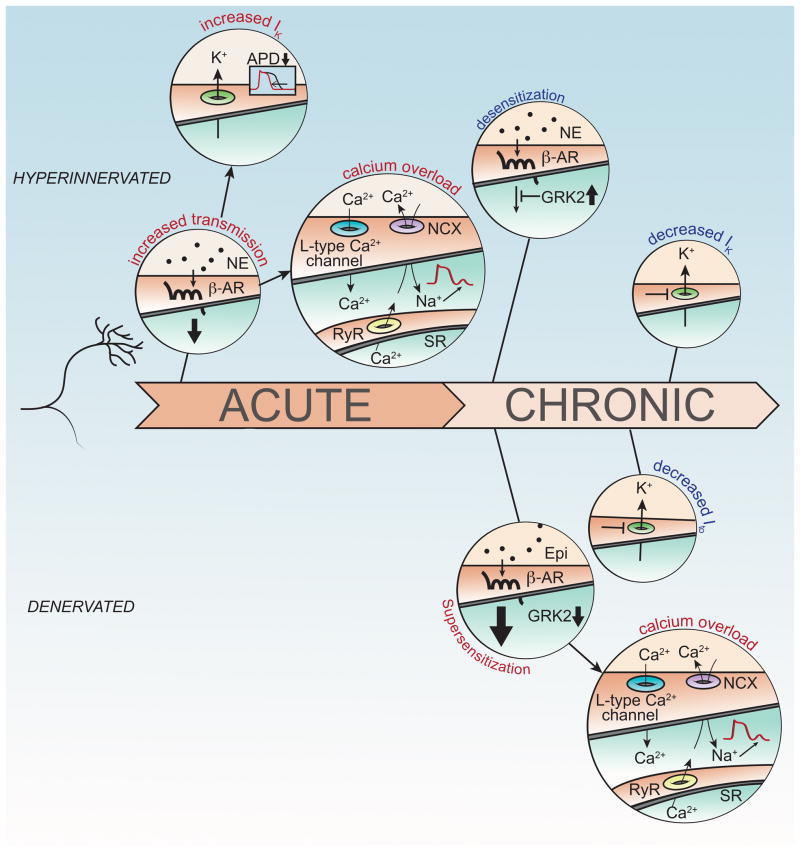Figure 1.
Hyperinnervation and denervation can both contribute to arrhythmias. Acute hyperinnervation or excess NE (Top) leads to increased activation of β-ARs (beta adrenergic receptors) and subsequent changes in Ik and calcium overload. β-AR signaling increases Ik which shortens action potential duration (APD). At the same time, intracellular Ca2+ rises due to enhanced influx via the L-type Ca2+ channel and increased release from the sarcoplasmic reticulum (SR). Extrusion of Ca2+ from the cytosol via the Na+/Ca2+ exchanger (NCX) produces a net inward current leading to delayed afterdepolarizations (DADs). In contrast, chronic hyperinnervation leads to desensitization of β-AR signaling and decreased Ik. Chronic denervation (Bottom) results in β-AR supersensitivity and decreased Ito. Activation of super-sensitive β-AR signaling pathways by circulating epinephrine leads to calcium overload and DADs.

